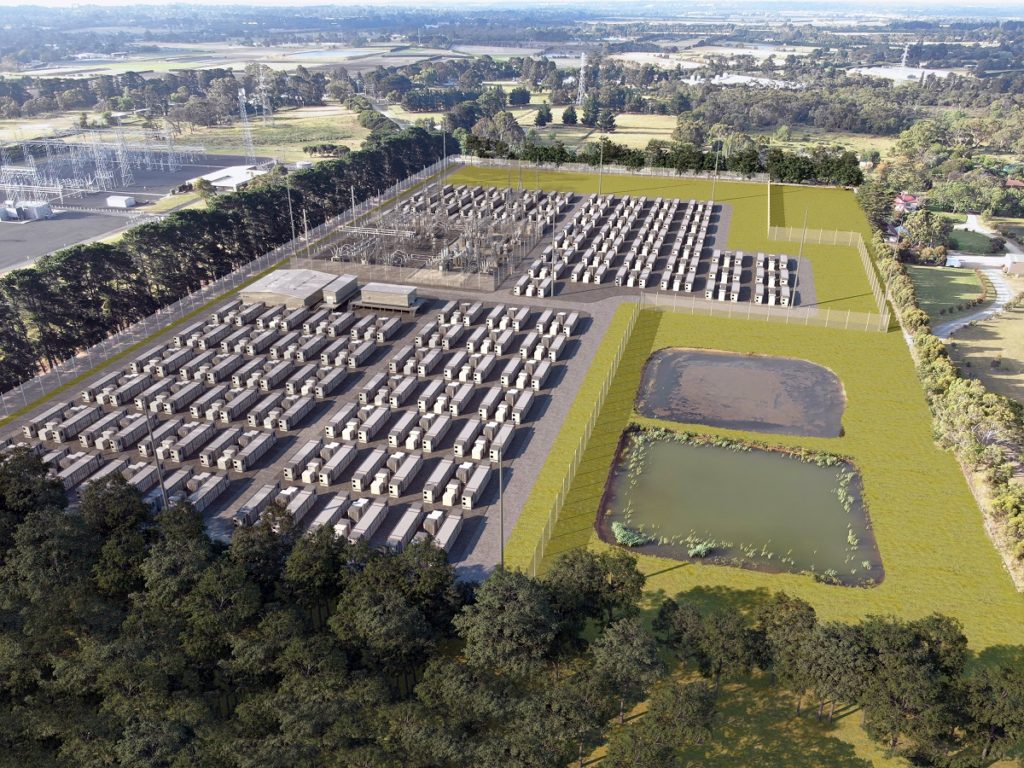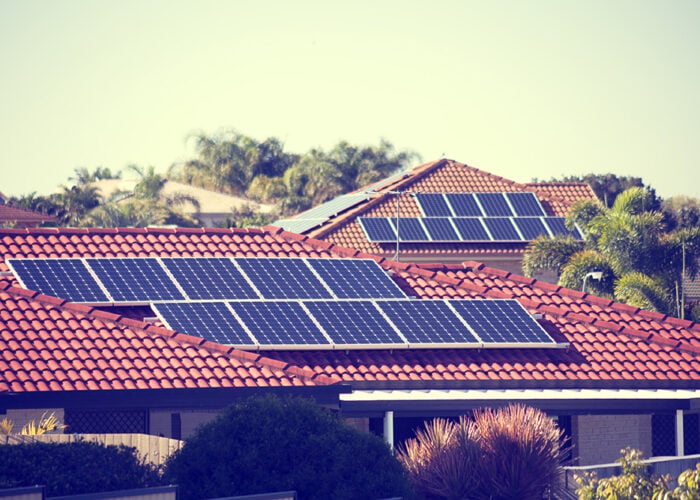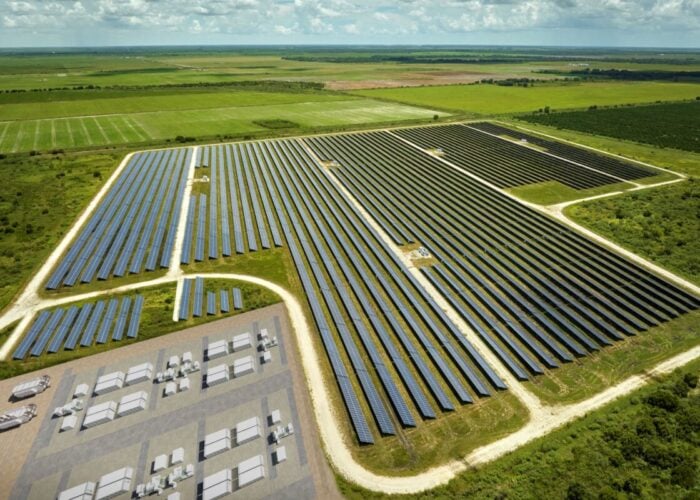
Alongside every solar success story is a side note tucked away in the margins; for every new PV plant to go into the ground, the remaining capacity available on the grid shrinks, a little at a time. It’s hardly an issue in those markets where solar – and indeed other renewable technologies – make up a less than significant proportion of the electricity mix, but for Australia – which according to the country’s Clean Energy Regulator added 1.7GW of new large-scale solar in 2020 – it is now very much a problem facing new developments.
Now, that’s not to say that the market is struggling. The aforementioned statistics probably say enough on that matter. There is no shortage of new developments, and optimism in the sector currently seems high.
Unlock unlimited access for 12 whole months of distinctive global analysis
Photovoltaics International is now included.
- Regular insight and analysis of the industry’s biggest developments
- In-depth interviews with the industry’s leading figures
- Unlimited digital access to the PV Tech Power journal catalogue
- Unlimited digital access to the Photovoltaics International journal catalogue
- Access to more than 1,000 technical papers
- Discounts on Solar Media’s portfolio of events, in-person and virtual
“I think there is plenty of scope for more renewable projects to be completed in Australia, because we’re in the middle of a significant transition away from fossil fuels to green energy,” says Morris Zhou, co-founder and CEO of Australian renewables developer Maoneng.
This is perhaps reflected in Maoneng’s pipeline, which currently stands at 750MWdc of solar and 1,800MWh of battery storage. However, not every player in the market shares the same outlook, with several notable exits occurring over the past year or so. First up was Australia-based engineering, procurement and construction (EPC) provider Downer Group, which announced its withdrawal from the large-scale solar sector in 2020, with CEO Grant Fenn saying at the time that solar operators were faced with issues around connections, grid stability and equipment performance.
Downer would not be the only one. A month later UK-based infrastructure giant John Laing said it would be exiting the solar and wind market due in part to issues such as transmission loss. It followed the company’s 255MW Sunraysia solar project – which it developed with Maoneng – being particularly hard hit by transmission issues as well as delays with the Australian Energy Market Operator’s registration process, which held up the project’s connection to the grid.
Next up was New Energy Solar, which sealed its exit from the market with the sale of its 11MWdc Beryl and 56MWdc Manildra PV projects in New South Wales in June 2021. In the company’s FY 2020 results, Stuart Nisbett and Jeffrey Whalan, chair of the responsible entity and chair of the company respectively, said: “Clearly, NEW is an Australian-originated business but the policy and regulatory environment for renewables in Australia is not conducive to growing the business and achieving economies of scale in Australia.”
Policy: A tale of two sides
You’d be hard pressed to find a solar market without at least one policy-related complaint, and Australia is no exception. In fact, policy is one of the biggest challenges facing large scale solar developers today, says Kane Thornton, Clean Energy Council (CEC) chief executive, with “unhelpful and unpredictable government intervention” creating uncertainty for investors. This is of particular note as investor confidence is at its lowest level since December 2019, according to the CEC’s Clean Energy Outlook- Confidence Index. Thornton gives example of two new gas plants in New South Wales, with one – to be located in Hunter Valley – to cost the Australian government up to AU$600 million, while the other – developed by EnergyAustralia – was approved by the government of New South Wales in May.
However, some government initiatives are certainly to be praised, in particular the Renewable Energy Zones (REZ) initiative. These are areas in the National Electricity Market where clusters of large-scale renewable generators can be efficiently developed, capitalising on economies of scale by connecting large amounts of renewables in the same location. A key element of REZs is upgrading transmission infrastructure to enable the mass deployment of renewables, addressing market barriers cited by some of the investors to leave the market.
The government of New South Wales launched a registration of interest process in June for Australia’s largest REZ, which is expected to deliver as much as 8GW of capacity. While the NSW government itself has committed AU$78.9 million to its development, the REZ is expected to deliver AU$10.7 billion in private investment. It follows the state seeing a nine-fold oversubscription in interest for its first REZ, receiving 113 registrations of interest which totalled 27GW of capacity.
NSW is also not the only state to introduce these zones, with Queensland having also seen a deluge of interest for its planned REZs, with enough projects put forward in 2020 to create 60GW of clean energy in the Australian state. Additionally, Victoria is planning to establish six REZs with the potential to unlock 10GW of additional capacity for renewables.
But REZ schemes are not without their failings. “Unfortunately it appears these state government schemes will be negatively impacted by proposed policies from the Energy Security Board (ESB), particularly proposed ‘access reforms’,” Thornton says.
The REZ have been designed as a stepping stone towards the proposed access reforms, designed to improve the transmission system. Independent chair Kerry Schott stated in January 2021 that the ESB is concerned about security constraints in some of the NEM as well as increasing pressure on distribution networks from growing rooftop solar penetration, increasing large-scale renewable generation and low wholesale prices.
There are a vast number of measures included within the reforms, although chief among them are those to alter current market operations through the introduction of locational marginal pricing and financial transmission rights, with a proposal to also move to dynamic loss factors, something which the CEC said last year would be “more volatile and unpredictable than the current, already problematic marginal loss factor regime”.
“These reforms could make it extremely difficult for solar farms to make the best use of the available grid, which will increase costs for consumers,” Thornton says.
While low wholesale prices are a key concern for the ESB – and a motiviating factor behind the reforms – this is not an opinion shared by everyone. The fall in wholesale prices has largely been driven by the boom in residential solar in Australia – with 2.5GW of new capacity installed in 2020 according to the Australian Energy Regulator. AEMO found that wholesale electricity prices fell up to 68% in South Australia in Q1 2021, with this a result of a sharp uptake in renewables, including rooftop PV, with South Australia’s average quarterly electricity price reduced by AU$10/MWh (US$7.75/MWh).
However, Anton Rohner, CEO of renewables project developer UPC\AC Renewables Australia, says: “Downward pressure on wholesale prices from rooftop solar is certainly a factor to be considered, but this must be weighed up against the upward price pressure caused by the closure of ~8GW of coal plants over the next decade, the timing of which may be brought forward by the rooftop solar boom.”
Additionally, while changes in wholesale prices can create a challenging environment, movements in wholesale prices are a fundamental element of the National Electricity Market and volatility in wholesale prices are a traditional market risk for investors, Thornton says. “What is most important is that these investors have a stable and predictable regulatory environment, so that they can get on with their main focus, which is to manage wholesale price risk,” he says.
Revitalising a buckling grid
The compressed wholesale prices are then, perhaps, not the most pressing of problems for new developments. Constraints on Australia’s grid infrastructure, however, are proving to be a consistent stumbling block for both new projects – which struggle to connect in the first place, facing uncertainty over connection timelines – and existing projects, which are seeing their output curtailed. “Our grid is simply not fit for purpose as the clean energy transition continues,” Thornton says.
While this is an issue impacting developers across the board, Rohner says that some new international entrants into the market in the last few years “haven’t done their homework”, paying particular mention to how transmission rules work in the country in regards to congestion or constraint analysis.
“It’s getting harder for us to manage the stability of the power system as the penetration of solar and wind, even at today’s levels, pushes the system to its limits.”
daniel westerman, ceo, aemo
“Several investors have lost their money and are already managing their asset portfolios. We may be heading into a period of consolidation as the larger players shore up their positions in the market,” Rohner says.
When it comes to mitigating the impacts of Australia’s transmission infrastructure on new developments, there are several options available to developers. First is the method adopted by AC/UP Renewables, which has chosen its project locations on the higher voltage – and more robust – parts of the transmission network where constraint issues are less prevalent. The company tends to go for connections into the 330kV or 220kW system over the 132kV or 66kV sub-transmission system which was until recently the favoured voltage for utility-scale solar plants due to its cost-effectiveness. But this strategy also means larger projects are needed to justify the connection costs, indicatively moving from 100MW+ projects up to 400MW size projects, Rohner says.
While this helps to circumvent some of those constraints, it is not a fix to the original issue, which Rohner suggests requires significant investment in new transmission infrastructure, something he says is recognised across the industry, including by the Australian Energy Market Operator (AEMO), the NSW government and transmission operators themselves.
Indeed, AEMO has established a joint initiative with the CEC called the Connections Reform Initiative to address connection challenges. It aims to deliver a consistent and predictable connections process that delivers repeatable outcomes, reduce re-work and improve efficiency and quality of information to address information asymmetry and create a collaborative working model between industry, AEMO and the network service providers.
The rise in utility-scale renewables is also causing other issues for the grid, however. As penetration increases, the cost of power generation is being pushed to zero and below, prompting spinning thermal generators, which are used for system stability including frequency control and inertia, to disconnect. “It’s getting harder for us to manage the stability of the power system as the penetration of solar and wind, even at today’s levels, pushes the system to its limits,” said CEO of AEMO, Daniel Westerman, giving the keynote address at an event hosted by the Committee for Economic Development of Australia (CEDA) in July 2021.
The potential of storage
A technology capable of supporting both the stability of the grid in the long term and also individual renewable projects in the short term through co-location is battery storage. An oft-heralded technology throughout the power sector, battery storage’s role in Australia’s energy market is no less celebrated.
“While there are definitely grid constraints and challenges, battery storage can help alleviate these through its role in providing electricity back into the grid when it’s most needed, helping overcome the intermittency of renewable generation through frequency response and regulation of pricing,” Zhou says, suggesting that more people are realising the crucial role batteries can play at a national level.
Indeed, storage is being increasingly paired with solar, and standalone storage developments are also becoming more common. In July, the New South Wales government approved the Stubbo Solar Farm and Battery, a development from UPC/AC Renewables pairing 400MW of solar with 200MW/200MWh of battery storage in NSW’s Central-West Orana REZ. Other recent developments include a 150MW/300MWh project in development in Queensland by state government-owned electricity generation and retail company Stanwell.
A spokesperson for Stanwell told PV Tech Power that Queensland experiences some system strength issues in weaker parts of the network, particularly in North Queensland, and that the energy market is rapidly changing. “Our focus has been on identifying battery storage solutions to create value for our portfolio and help facilitate the integration of renewable energy into the energy system. Our models show that a revenue stack is the current commercial pathway for large scale energy storage.”
Playing into frequency control and ancillary services markets can be – in particular in South Australia – more lucrative than simply selling energy, according to Jon Ruddick, CFO of Australian microgrid firm eleXsys. Alongside the financial benefits, storage also helps stabilise the grid, allowing for more solar to then be connected, with this forming a positive cycle, he says.
A smorgasbord of planning processes
While it seems there is something of a consensus that transmission is a difficult issue for renewables in Australia, another key consideration for many developers looking for the perfect spot for their next asset is the ease of securing planning permission and the complexity of the process.
Developers seem to be relatively supportive of the current planning processes within Australia, which vary from state to state. However, this does mean that the timeframes for obtaining approval, the costs involved – including application fees – and the risks associated with obtaining approvals, appeals and so on also all vary from state to state. Alongside this, there is also a federal environmental approvals process which can by triggered by the Environmental Protection, Biodiversity and Conservation Act.
“This patchwork approach can act as a disincentive to new developments,” Rohner says, “but generally speaking the rules are fairly clear and good projects get approved.” The planning process was also praised by Zhou, describing it as well-structured and relatively straightforward, qualities that he says make Australia a good place to do business. “Of course, as a developer you need to be diligent and thorough in your approach, making sure your claims are backed by data and evidence for example, and taking a proactive approach to community and stakeholder relations… The system here rewards professionalism, whether you’re working with people at the local level, a state government, or your suppliers and commercial partners.”
It is factors like the transparency of the planning system that have attracted international players to the market, alongside elements like the low sovereign risk. BP, for instance, has certainly started making a presence for itself in the market, with its solar development arm Lightsource BP having secured AU$330 million (US$255 million) to fund the development of its second and third utility-scale solar projects in Australia in June 2021. Meanwhile, fellow O&G major Shell purchased a 49% stake of Australian utility-scale PV developer ESCO Pacific in 2019.
It is certainly a competitive market, but this is a positive, Zhou says, helping to sharpen strategies and encouraging companies to excel and be creative to ensure projects get delivered with good commercial returns. “There’s room for everyone, and it’s important to note that it’s not a race to the bottom here on pricing either, like it is in some other countries,” he says.
The competitiveness of the market is only increasing, with Thornton saying that there is in turn increased interest from major global energy companies. “There remains enormous long-term opportunity for sophisticated investors in renewable energy and energy storage,” he says.
It seems that despite the challenges surrounding grid infrastructure and upcoming access reforms, the sentiment of those on the ground in Australia is one of positivity. The market has many attractive features, including the ease of planning and REZs, and there is much potential for new developments, even with the high level of interest in the market.
As Zhou says: “Overall, the transition to renewables means there’s space for everyone, large and small, to do well in this market.”







